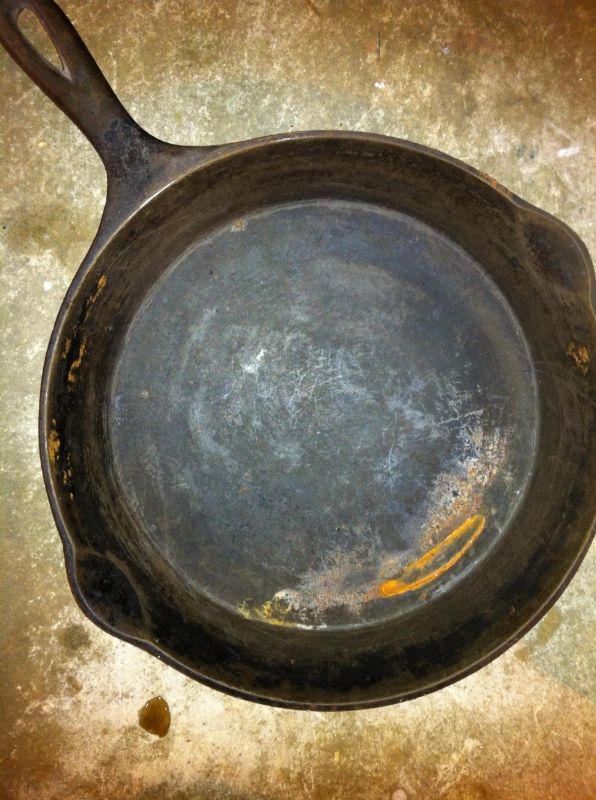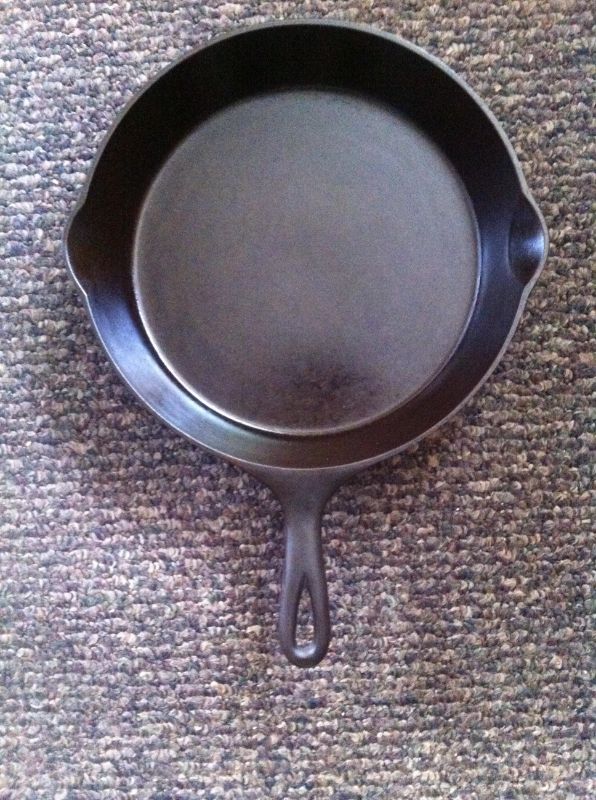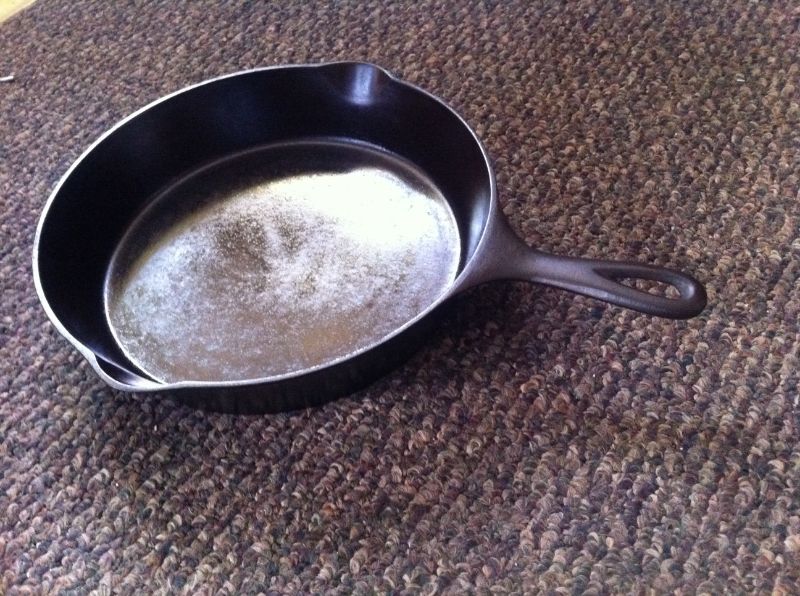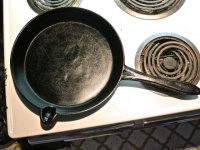Just finished restoring and seasoning my first CI pan. I've been using a Lodge flawlessly for several years that is straight out of the store (unseasoned by myself other than cooking). I recently found what I believe to be 1930's Griswold and a Wagner in my house though, and began researching heavily. I stripped and seasoned the Wagner as it was the less valuable pan, and it came out perfect with a 6 coat glassy Crisco baked surface.
Before & After




I want to do the Griswold by the book, but had a question before I start. Can I save the near 30 year seasoning on the inside or am I better off stripping? The pan is black as night but has heavy buildup and white markings on the outside and bottom. I have lye on the way as we speak but wasn't sure if the stories of ultimate flavor coming from old seasoning.
I also have a question about lye baths. Is a 5% vinegar bath adequate for neutralizing a pan after the lye?
I have soybean oil on the way as well. I'm going to try that instead of Crisco as I found that it has the highest iodine value which I've read is linked to bonding sites and hardness during polymerization.
Thanks in advance
Michael
Before & After




I want to do the Griswold by the book, but had a question before I start. Can I save the near 30 year seasoning on the inside or am I better off stripping? The pan is black as night but has heavy buildup and white markings on the outside and bottom. I have lye on the way as we speak but wasn't sure if the stories of ultimate flavor coming from old seasoning.
I also have a question about lye baths. Is a 5% vinegar bath adequate for neutralizing a pan after the lye?
I have soybean oil on the way as well. I'm going to try that instead of Crisco as I found that it has the highest iodine value which I've read is linked to bonding sites and hardness during polymerization.
Thanks in advance
Michael



